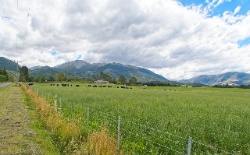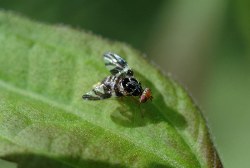What We Want For Xmas: Organic Strawberry Growers
What We Want For Christmas - Strawberry Growers To Go Organic
Analysis of New Zealand Food Safety Authority (NZFSA) pesticide residue results out yesterday show strawberries laced with multiple residues and dodgy chicken take-aways in Auckland. (1)
Samples of strawberries bought in late July and August in Auckland, Christchurch, Dunedin and Napier, were tested along with 60 other food types as part of the NZFSA Total Diet Survey.
The 4 combined strawberry samples from each city all had at least 8 different pesticides, with the Christchurch composite having 13 different chemicals, and Dunedin 11.
“Lets hope this Christmas the strawberries are a lot better or preferably organic,” said Soil & Health –Organic NZ spokesperson Steffan Browning.
“Certified organic growers successfully grow fruit and vegetables without dangerous pesticide residues.”
“It is possible that the out of season strawberries were imported from Australia, but without dimethoate residues as expected in Australian imports, it appears a New Zealand grower needs some organic growing lessons for Christmas. 8 to 13 residues is disrespectful to consumers and shows a casualness that appears to be creeping back into New Zealand growers approach to pesticides.”
“The Auckland Chicken Take-Away composite sample contained 10 different pesticide residues, while the other cities had two residues each. Something is definitely dodgy in some Auckland take aways.”
“Multiple residues expose consumers to increased risks including cancers, reproductive, cardiac, respiratory and nervous system disorders. The Food Safety Authority needs to look much more closely at these results. Non-compliance with the NZFSA accepted maximum residue limits (MRL) was evident in other testing of celery, spinach and ginger, with one celery sample having 4 different pesticides over the limit and another with 3.”(2)
All 27 celery samples had at least one residue, and only 5 did not contain chlorothalonil fungicide (sold as Bravo) and which is implicated in aggravating the health affects of other pesticides. Those 5 contained dithiocarbamate fungicides, as did most fruit and vegetables tested for NZFSA.
Dithiocarbamate and chlorothalonil are both on the Pesticide Action Network International list of Highly Hazardous Pesticides for global phase out.
Dithiocarbomate fungicides (eg mancozeb, maneb, thiram) are severe central nervous system toxicant, carcinogen, and endocrine disruptors; also causing sterility and birth defects, and affecting liver, kidney and respiratory and cardiac, systems. Chlorothalonil, apart from aggravating the health effects of other pesticides is carcinogenic, mutagenic and an environmental toxin.
“The lists go on, with apples, pears, pizza, muffins, bread, courgettes, grapes and hamburgers, and hot chips being the more common multiple residue foods. A New Years resolution for consumers will be to grow your own or go organic, or get your local grower or baker to go organic,” said Mr Browning.
“Soil & Health – Organic NZ will be meeting with NZFSA in the New Year to look at how we might encourage grower improvement towards significant pesticide reduction in clean green 100% Pure Aotearoa New Zealand.”
Soil & Health has a motto of Healthy Soil, Healthy Food, Healthy People and a vision of an Organic 2020.
ENDS


 Netsafe: Making A Splash With Online Safety: Netsafe Launches New Flagship Programme For Kids
Netsafe: Making A Splash With Online Safety: Netsafe Launches New Flagship Programme For Kids NZGBC: Flood Resilience PhD Student Widi Auliagisni Named Future Thinker Of The Year 2024
NZGBC: Flood Resilience PhD Student Widi Auliagisni Named Future Thinker Of The Year 2024 Business Canterbury: European Free Trade Agreement A Game-changer For Canterbury
Business Canterbury: European Free Trade Agreement A Game-changer For Canterbury Business Canterbury: Urges Council To Cut Costs, Not Ambition For City
Business Canterbury: Urges Council To Cut Costs, Not Ambition For City Wellington Airport: On Track For Net Zero Emissions By 2028
Wellington Airport: On Track For Net Zero Emissions By 2028 Landcare Research: ANZAC Gall Fly Release Promises Natural Solution To Weed Threat
Landcare Research: ANZAC Gall Fly Release Promises Natural Solution To Weed Threat



